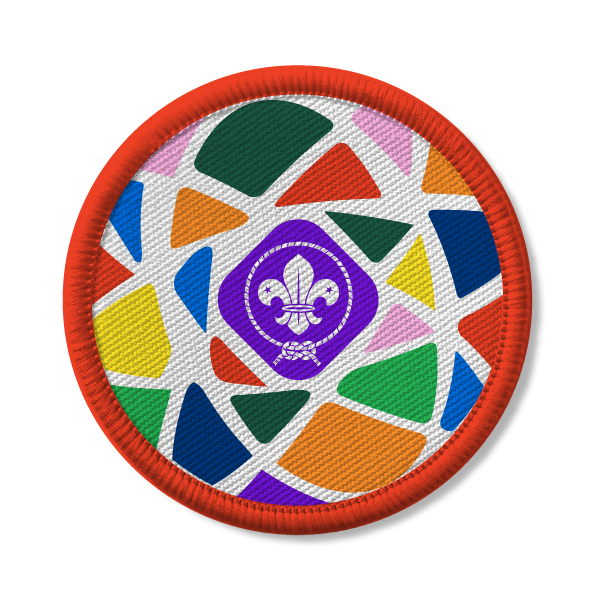
Go wild with wind power
You’ll need
- Small electric fans
- Handheld fans
- Items that move in the wind, such as paper, leaves, petals, wind chimes, toy windmills or pinwheels
- Objects that can roll, such as ping pong balls, pencils, cardboard tubes or tin cans
- Masking tape or chalk
- Tape measure or ruler
Before you begin
- Use the safety checklist to help you plan and risk assess your activity. There's also more guidance to help you carry out your risk assessment, including examples.
- Make sure all young people and adults involved in the activity know how to take part safely.
- Make sure you’ll have enough adult helpers. You may need some parents and carers to help.
Planning and setting up this activity
- Some books about wind power are ‘Wind Energy for Kids’ by Thomas Simons and ‘Planet Power’ by Stacy Clark.
- You may wish to run this activity inside, so the items aren’t affected by outside winds.
- Create a measuring line or giant ruler on the floor. Use masking tape or chalk to create a line on the floor. Use a ruler or a measuring tape to mark out every 10cm along the line or on the masking tape.
Run this activity
- Gather everyone together and explain that you’re going to learn about how powerful wind is.
- Talk to everyone about the wind, explain that wind can be strong and powerful. It can also be used to help us. People have been using the wind to power things, such as boats and windmills, for hundreds of years. Now, we can use wind to generate electricity too.
- Explain to everyone that there are lots of things that create wind around the space and you're going to see which objects move most in the wind. Place the small electric fans and handheld fans around the space.
- Let everyone explore the different sources of wind power, such as how it feels on their faces or their hands. Make sure no-one touches the fan or the fan blades while they’re turned on.
- Now, introduce all the different items you’ve gathered. You could talk about each one, how light and heavy it is, and how they think the wind might affect them.
- Tell everyone that you’re going to test item will go the furthest using wind power. Ask everyone to choose an item that they think will move the furthest. If people all want the same item, you could let people work in pairs or choose names from a hat to decide the order they’ll pick in.
- Place a fan at the start of your measuring line and turn it off. The first person should place their item in front of the fan. They should mark where they’ve placed the item. All the other items can be placed there for fairness.
- You may need to direct the fan downwards, but once it’s in position, make sure it doesn’t move again. This helps to make sure your experiment is fair.
- When everyone’s ready, turn the fan on and see how far the item moves. Let the person mark how far the object moved. They could use chalk, a bean bag, a cone, a token, or sit or stand where the object stopped.
- The next person can then place their item in front of the fan, then run the experiment again. Keep going until all the items have been used.
- You could then repeat this experiment with the different fans to see if this impacts how far the items move.
Reflection
This activity was all about wind power and trying a science experiment. In science, we make predictions and then test them. Which items went the furthest or were the easiest to move? Did your item move as far as you thought? Are you surprised by any of the items?
Wind can be really strong. What did the wind feel like? Was the wind as strong as they thought it would be? Which source of wind power was the strongest and which objects were the easiest to move? Why might that be?
We can use wind to power lots of things, such as boats. We can also use wind to power wind turbines that make electricity. Why might this be good? Wind is free and it’s a renewable energy source, which means that it’s good for the environment, as wind is natural, and we’ll never run out of wind. What might be some bad things about wind energy? If there’s no wind or low wind, then the wind turbines don’t move, so we can’t make electricity.
Safety
All activities must be safely managed. You must complete a thorough risk assessment and take appropriate steps to reduce risk. Use the safety checklist to help you plan and risk assess your activity. Always get approval for the activity, and have suitable supervision and an InTouch process.
- Science
Supervise young people, and only do science activities that are advised and age appropriate for your section. Test activities first, to make sure you’re confident you can lead them safely. Use protective clothing where necessary.
- Electrical equipment
Inspect cables for any damage before each use. A responsible adult should supervise people using equipment, and people should follow instructions on how to use them correctly and safely. They should be properly maintained and stored. Be extra cautious of trailing cables and water when using electric equipment.
Make it accessible
All Scout activities should be inclusive and accessible.
Depending on what people enjoy in this activity, this might help you decide what people like or want to do next in Earth Tribe. You could make your own windmills, wind turbines or wind chimes to explore wind more.
